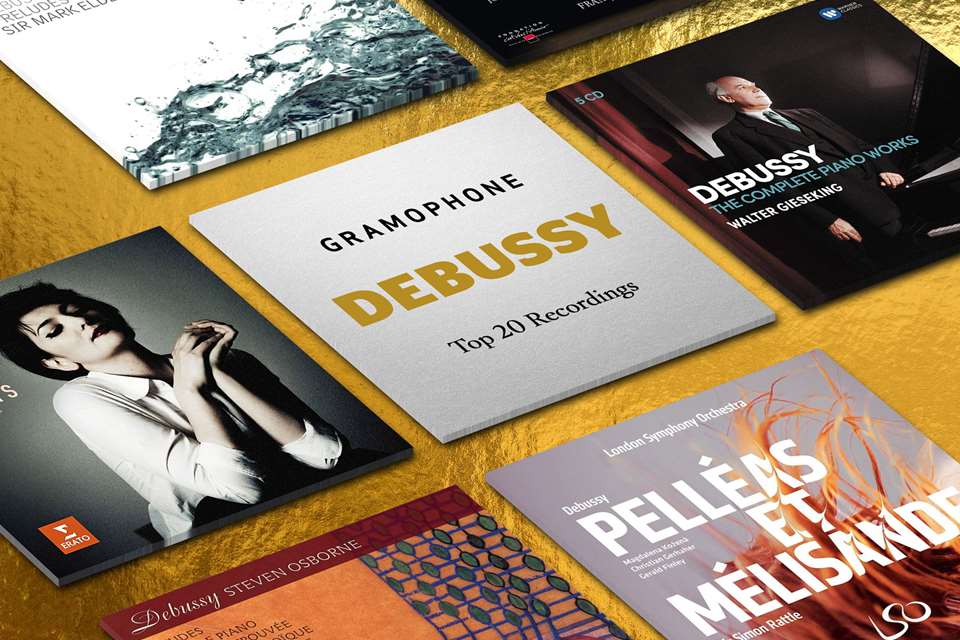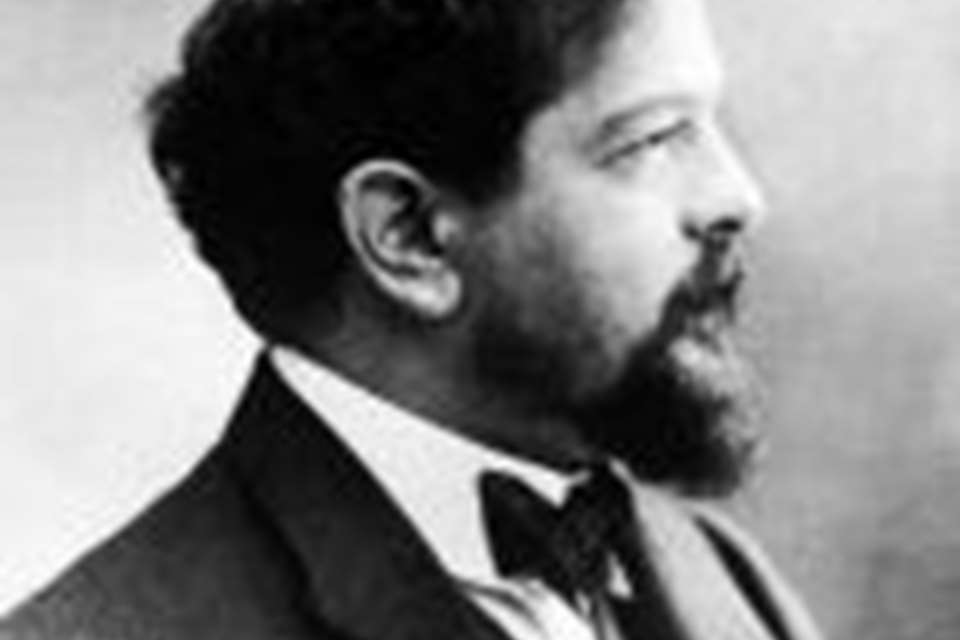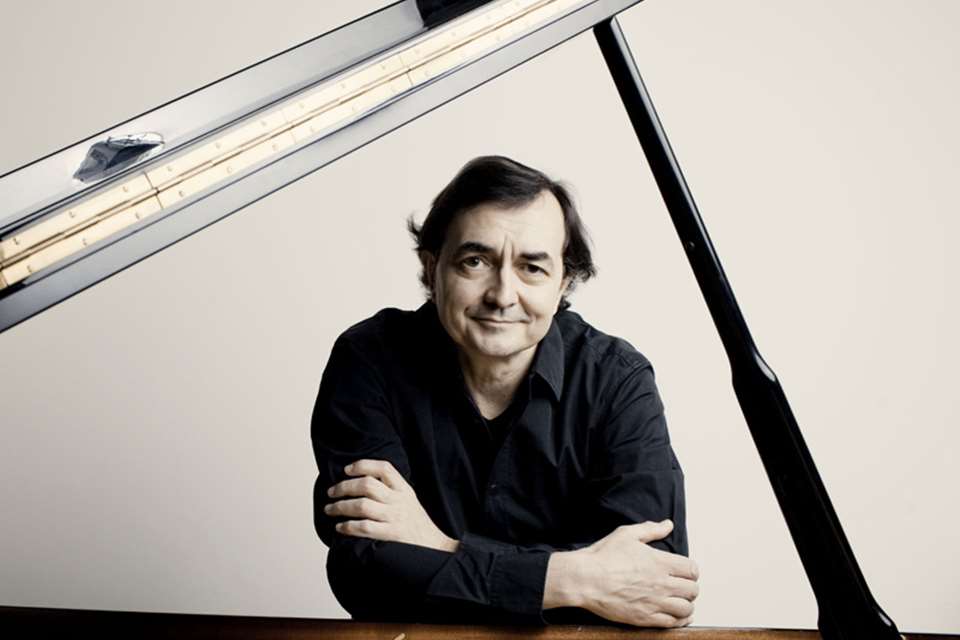Debussy's La mer: a complete guide to the best recordings
Rob Cowan
Tuesday, September 18, 2018
Rob Cowan chooses his top recordings of Debussy’s seascape, which helped establish the composer’s reputation as the founding father of musical modernism
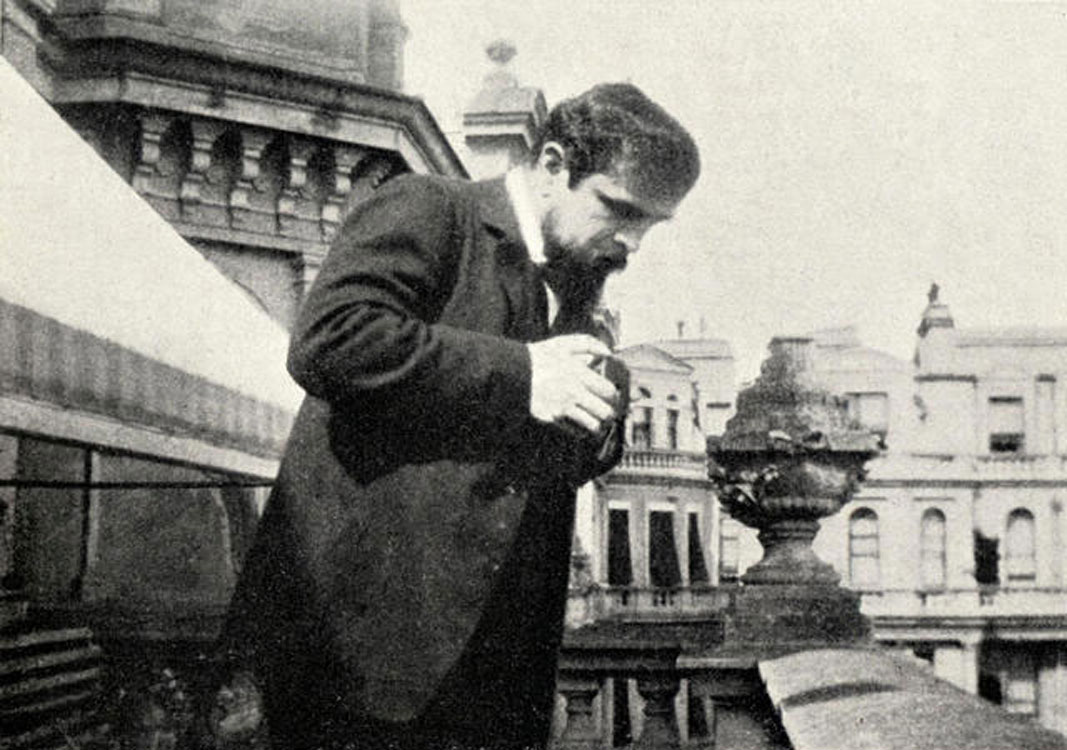
Welcome to Gramophone ...
We have been writing about classical music for our dedicated and knowledgeable readers since 1923 and we would love you to join them.
Subscribing to Gramophone is easy, you can choose how you want to enjoy each new issue (our beautifully produced printed magazine or the digital edition, or both) and also whether you would like access to our complete digital archive (stretching back to our very first issue in April 1923) and unparalleled Reviews Database, covering 50,000 albums and written by leading experts in their field.
To find the perfect subscription for you, simply visit: gramophone.co.uk/subscribe
Asked to name one orchestral work that best defines the fledgling 20th century in musical terms, I wouldn’t say late Mahler, Stravinsky’s The Rite of Spring or Schoenberg’s Five Orchestral Pieces, but rather a cross-Channel, triple-tier seascape that thunders through the ill-applied cliché ‘Impressionism’ like a tsunami and lands us in mid-ocean, its inner restlessness responsive to any number of recorded interpretations. Debussy, a true lover of the sea (though he couldn’t swim), started La mer in Burgundy in 1904 and continued working on it in Jersey, then in Dieppe. Intriguing harmonic and rhythmic complexities reign throughout the score, though it’s easy to forget that the pounding pulse that marks the close of the work’s finale, ‘Dialogue du vent et de la mer’ (hereafter referred to as iii), is as violent as any music from the period. Furthermore, this strong pulse wasn’t merely replication of a powerful seaborne current, for it was written in the period when Debussy fell madly in love with the singer Emma Bardac. There I rest my case.
Sviatoslav Richter rated La mer alongside Bach’s St Matthew Passion and Wagner’s Ring for musical significance, and yet after the work’s premiere (October 15, 1905), J Jemain wrote in Le ménestrel that Debussy ‘avoids all that might resemble a melody, a leading theme, however short’, which is pretty difficult to imagine now, more than a century later, when the ‘themes’ are so indelibly embedded in our musical memory banks. Once or twice heard and La mer becomes part of your musical DNA.
First to leave port
Among the earliest recordings of La mer to hit the stores (or, should I say, shores) was the one that Piero Coppola set down in 1932 with the Paris Conservatoire Orchestra. Coppola’s laudable interpretative priorities include nifty tempos, vivid hairpin dynamics and an especially dramatic account of the passage for 16 divided cellos in ‘De l’aube à midi sur la mer’ (hereafter i) – marked Très rythmé (4'18"), which is precisely how it sounds. ‘Jeux de vagues’ (hereafter ii) cavorts and frolics at a tempo way beyond the norm. Coppola’s 1932 La mer has a bold, freshly minted feel to it and sounds more like a live production than many a live recording from years later. But it wasn’t his first.
I thank transfer guru Ward Marston for allowing me access to a conceptually similar Coppola version from 1929 with the ‘Grand Orchestre Symphonique’ (HMV shellac – nla), which turns out to be historically significant in one key respect: iii features brass ‘fanfares’ (albeit very distantly recorded) that would – had Debussy left them in – be on page 157 of my Eulenberg score, above forte woodwind and tremolando strings. The story goes that the ‘fanfare’ tune so resembled the five-note title-phrase of the then relatively recent song ‘Ciribiribin’ (Alberto Pestalozza, 1898) that every time the passage appeared in concert there would be titters among the audience. Hence its excision, which in my view is a great shame, as it suggests a desperate alarm amid the storm. Coppola’s better-recorded 1932 version doesn’t include it, and to the best of my knowledge he is the only conductor who has left us two complete recordings of La mer covering both textual options.
Arturo Toscanini first performed La mer in Milan in 1909, just four years after the premiere. He actually corresponded with the composer, who interestingly granted his request to bolster the divided cello passage with violas. Also, in the finale he alters the ff pizzicato chord at one bar before fig 46 to arco (Guido Cantelli does the same). I have seven Toscanini versions to hand (covering the period 1935-53), the best-recorded being from 1950 (RCA), and the most driven from 1945 (Dante/Lys – nla). The 1953 NBC broadcast balances spontaneity with characteristic transparency and energy, but what really makes the Guild release unmissable is just over 90 minutes’ worth of rehearsal, where the volatile octogenarian maestro tirelessly drills his players on every conceivable detail in the score. If you don’t know La mer before listening to Toscanini’s rehearsal of it, you certainly will afterwards. I especially like the way he insists on a lamentoso feel for the last movement’s wailing woodwind themes – though here no one quite matches Serge Koussevitzky with the New York Philharmonic in 1942 (surely the most imposing of Koussevitzky’s recordings of the work; available on West Hill Radio Archive, 7/13).
There are many parallels between Toscanini’s La mer and that of the conductor who was widely considered to have been his protégé, Guido Cantelli – their approach is both brightly lit and as natural as the waters that the music reflects. Cantelli was a true master when it came to balancing the forces under his command (the Philharmonia in this case, in 1954), though unless the rather veiled sound is playing tricks on me, he too adds violas to the divided cellos in i. Still, viewed overall, this is among the most musical and certainly the best played of vintage recordings of La mer.
While Toscanini’s brand of excitement is Apollonian in style, Victor de Sabata’s has the feel of an excited Dionysian free-for-all, especially at the climax of ii. De Sabata’s La mer (1948) is malleable, curvaceous and has accelerating climaxes that speed across the waves without any sense of compromise. Furthermore, it includes the fanfares in iii; they’re often played on trumpets, but on de Sabata’s recording they cry from afar on horns (from 6'35", track 3), as they do also on Roger Désormière’s excellent 1950 Supraphon recording. If you can tolerate scratchy acetate sound, there’s an electrifying 1939 broadcast with the Royal Concertgebouw Orchestra under Pierre Monteux (RCO Live), convincingly flexible and with the fanfares in iii startlingly prominent. Other accounts with the same orchestra (under Eduard van Beinum, Bernard Haitink and Mariss Jansons), though fine in their different ways, aren’t quite so memorable.
TransAtlantic adventures
Charles Munch’s Boston Symphony Orchestra recording (1956) is distinguished by some exceptionally refined execution, especially from strings and woodwind – it’s warm but not quilted, with deft phrasing in ii, though at 0'45" the trilling strings are hardly piano. Munch’s La mer is red-blooded and presses forwards consistently, most memorably in i and ii; but although iii is lively enough, the elements are kept at bay: I’d call it a storm overheard rather than overhead, but Munch does give us the fanfares, brazenly delivered by horns and trumpets.
La mer appears to have been something of a stock in trade for Herbert von Karajan. Of the four Karajan versions I’ve listened to, the one that made the strongest impression – somewhat Teutonic, it’s true, but charged with atmosphere – was recorded with the Berlin Philharmonic in January 1977. At the start of the work, darkness reigns, and dawn takes time to break. Some tempos are slower than prescribed, but once at the 6'00" mark, or thereabouts, we finally set sail towards what turns out to be a positively Brucknerian coda. As for ii, the build-up is impressively three-dimensional; and the deafening centrepiece of iii at 3'08" will shake your joists, though there’s what sounds like a trumpet blooper about 40 seconds later. Karajan includes the fanfares in iii, on trumpets.
Fritz Reiner (1960) also includes the fanfares, and like Karajan takes a very broad view of i. Reiner is a master of musical transitions, and the way he allows the music to pick up speed, always subtly and on the wings of some exquisite playing from the Chicago Symphony Orchestra, is a minor miracle in itself. Reiner’s hallmark precision is everywhere in evidence, with cut-glass tremolandos from the strings and pinpoint staccatos from both strings and woodwind. The warmer gusts in ii are intimate rather than schmaltzy, and as iii rolls in you sense the hiss of the waves as well as their immense weight. This is the ultimate virtuoso La mer, but I say that in full appreciation of its profoundly musical qualities.
Ernest Ansermet knew Debussy personally (as did another master interpreter of La mer, Désiré-Émile Inghelbrecht), and he also includes the fanfares on trumpets in iii, literally bold as brass on all four of his Decca recordings. Best perhaps is the 1957 version, a memorably dramatic production in which execution is unusually taut and i has a restless quality, with oscillating tempos (not all of them marked) often with a tendency to push forwards. On all four recordings there’s a conspicuous pause around fig 5 in i (2'34" in this instance), but the chorale that closes the movement is truly Très lent; and even though the tam-tam is disappointingly distant, ii draws to a glittering, animated climax.
Daniel Barenboim sees Debussy as the founding father of musical modernism, and his 1978 Paris Orchestra recording has a crude, blustery impact that does indeed suggest confrontation, the sort that modernism would soon countenance in full. The recorded balance is imperfect, the manner of execution occasionally awkward. The divided cellos are placed right under your nose in the first movement (4'39"), the concertmaster’s role is granted soloistic prominence (3'07" into i; 1'58" into ii) and certain inner details are obscured. Still, there’s great dialogue between lower strings and tam-tam at the start of iii (though the use of portamentos near the end grates somewhat), and Barenboim’s vocalising is evidence of his involvement, much as it is on a more moderately stated performance from 2000 with the Chicago Symphony Orchestra, available on DVD (EuroArts: see Abbado entry in discography).
Blandness, balance and the mad excitement of sea swell
The polar opposite of Barenboim’s La mer (and Fritz Reiner’s), is Charles Dutoit’s relatively swift traversal from 1989, a smooth tonal blend packed with detail but hardly spinning a narrative. With fine engineering an undoubted plus, the performance is at its most compelling towards the end of i, where Dutoit and his players effectively reduce the tempo prior to the coda. The waves in ii surge forwards with impressive impetus; I’m lifted atop the current in iii, with very audible fanfares, but when the last chord has sounded I’m left bone dry.
Not so with Armin Jordan and the Suisse Romande Orchestra in 1990. The orchestra is in much finer fettle than it was under Ansermet, though the interpretative axis between clarity and subtle voicing recalls Ansermet’s heyday, and Jordan follows Ansermet’s lead by including the fanfares. Everything is in its proper place: woodwind in relation to strings, strings in relation brass, fine-tipped percussion (especially important), and the gentle wash of the score’s many softer passages. It’s a real joy to listen to, the work not only of Jordan and his players but also of his expert producer Michel Garcin.
Rather than deliver a feast of subtle asides, Leopold Stokowski and the LSO (1970) give us the full monty – texturally explicit, uncommonly broad in i, the playful waves in ii glamorously magnified. This La mer pulls you under, with wildly oscillating playback levels, polarised stereo, and blazing fanfares in iii. It’s good for the occasional dramatic dip, but whatever you do, don’t set up your beach hut nearby.
Of Pierre Boulez’s two recordings (with the New Philharmonia Orchestra for Sony in 1966 – 8/67; and with the Cleveland Orchestra for DG in 1991), it’s the later version that offers the more refined listening experience. The very opening is a gentle curtain-raiser revealing a tranquil dawn, and thereafter Boulez displays a characteristically meticulous attitude to dynamics. Well-balanced sound means that even the tiniest detail fits securely within the frame, and come the close of i, a sense of tenderness gives way to genuine grandeur, crowned by a cinematic tam-tam. Perhaps Boulez deals less playfully with the waves than some in ii, though again it’s such a joy to hear so much dovetailing detail; and if the colossal full-throttle thunderbolt at 2'56" into iii doesn’t quite match Karajan in 1977 for impact, it works within the context of a performance that significantly is all of a piece. An earlier Cleveland classic under George Szell in 1963 (Sony, 7/64) is keen-edged, alert and superbly played.
And so to Claudio Abbado and what in 2003 was the brand new Lucerne Festival Orchestra. Right from the off you notice how Abbado has balanced instrumental lines so that everything is heard – basses, cellos, violas and timpani, all are clearly audible. I’ve never heard such luminous reportage of what the woodwind are doing as the work draws to a close, and when Abbado employs portamentos among the strings, as he does in ii, it’s to appropriate expressive effect. I know that some readers object to applause (both this and the Mahler Symphony No 2 coupling on the CD were recorded at the same concert), but I urge you to make an exception for the sake of a remarkable recording. A well-directed DVD based on the same performance is also available (and features recordings of La mer also under Barenboim and Ormandy).
A maritime instinct … or not
Stéphane Denève and the Royal Scottish National Orchestra (recorded in 2011 and 2012) achieve forward momentum and an illusion of sea swell (you’ll definitely need your travel sickness tablets for this trip) so that by the time you reach the end of i on the crest of a very large wave you feel as if you truly have arrived. Denève is consistently alert to detail, and the dynamic recorded sound at times defies belief (the very end of the work, for example). What I like most about Denève’s performance is its naturalness, the result less of careful thinking than of musical instinct, or so it seems.
François-Xavier Roth and Les Siècles (2012) provide us with a version that employs instruments from Debussy’s own time – the first on disc to do so – and an approach to playing them that includes a very discreet use of vibrato among the strings. This is fine except maybe at 2'25" into ii, where the très espressif directive suggests more of an inner glow. Dynamics are in the main faithfully observed, though what should be quietly trilling strings at 0'47" into ii strike me as too loud. Elsewhere, only the harps (which have such a key role in this score) shy from prominence – presumably because of the instruments used. Like Abbado’s Lucerne version, this is a live recording, though unlike with Abbado you’d never guess: there’s hardly a hint of an audience.
In contrast to Roth, Sir Mark Elder’s Hallé Orchestra La mer (a brilliant Andrew Keener production) sounds live. Hearing this prompted me temporarily to abandon both notebook and score for the sheer joy of listening. Elder has the knack of ushering you in among the central workings of a piece. Things I hadn’t noticed before were newly but sensibly audible: the mp low bassoons at the Modéré, sans lenteur passage in i (1'41") and the timpani appoggiaturas at the end of the same movement. Then there are the pizzicato strings beneath the flute (2'33") and the clear-headed handling of the rhythmically complex passage at 4'14", underpinned by the basses. In iii, the fearless horns at 2'25" have real impact, as do the brazen fanfares at 7'05" on what sound like trumpets and horns. I could go on but will leave you to take my prompt. This intelligently conceived La mer is bold, rhythmically propelled and atmospheric, while the recorded sound has impressive presence.
Jun Märkl and the Lyon National Orchestra (2007) parade more virtues than they do shortcomings, the latter of little importance – such as vaguely articulated cellos at 1'43" into i, and at 0'50" in iii a muted trumpet that is surely too quiet for forte (the unmuted response soon afterwards is fine). But in general, iii is studded with significant detail, most memorably the gull-like piccolos around 2'57".
In comparison with Märkl’s outdoorsy traversal, Sir Simon Rattle’s live 2004 Berlin Philharmonic take on La mer is more a luxury cruise with richly upholstered surroundings, everything you’d have imagined Karajan’s 1977 Berlin version to be if you’d never actually heard it. In ii, the waves flirt rather than play, bringing us a few kilometres nearer the world of Debussy’s late, erotically charged masterpiece Jeux (try 2'28" in). In short, Rattle’s La mer matches the visceral impact of Abbado’s version but lacks its sense of spontaneity. I’d call it comfortably filmic rather than a weathered seascape, although it does have its moments; the sensual balance of strings (very high and low) and woodwind at the Plus calme et très expressif (4'22" into iii) is ideally judged.
A profound sense of quiet allied to richness among the pizzicato basses marks the opening of Robin Ticciati’s vividly recorded La mer with the Deutsches Symphonie-Orchester Berlin in 2017 as exceptional. When the lapping string quavers enter at 1'35", Ticciati and his players honour Debussy’s request for flexibility, and where the woodwind and solo violin should ‘give a little’ soon afterwards, likewise that’s precisely what happens. The stormscape finale works wonderfully well, with violins generating a sense of peril by playing near the bridge (at 1'10"), clearly audible bass-drum taps from 1'57" and prominent trumpet fanfares. My only reservation concerns a relative lack of animation among the waves in ii, where Les Siècles, the Hallé, the French National Orchestra (see below) and the Lucerne Festival Orchestra generate rather more in the way of playful sea spray. Otherwise, Ticciati’s is a memorable and sonically imposing production. As is Emmanuel Krivine’s idiomatic French National Orchestra recording, also from last year. This one interestingly offers an effectively tightened, even minute, version of the pause around fig 5 in i (2'31") which Ansermet favours on his recordings. Both conductors maximise on flexibility, Krivine’s approach to ii suggesting mermaids splashing playfully among the waves. One marvellous moment occurs at 5'56" in ii, where eerie tremolandos on violas and cellos suggest a sense of foreboding that is fully realised in iii, although the ff onslaught at 3'09" could have been more powerful. There’s also a unique feature on this recording in that Krivine offers both the 1909 revision of La mer (which he chose for his almost identically paced earlier (2009) recording with the Luxembourg Philharmonic on the Timpani label) and, on a separate track at the end of the disc, a slice of the original version, in other words 2'15" worth of iii (from bar 5 on p 149 of the Eulenberg score to the end) with the fanfares intact. It’s a nice idea, but with a total disc playing time of just 61'14", surely it would have been far preferable to give us the whole movement with the fanfares intact, and place it directly after the 1909 version of iii. As it stands, this fragment follows on from Images, which makes little sense. Still, it’s an extremely fine performance, vividly recorded; and it’s good that listeners can at least check out the alternative versions of the finale for themselves.
In a recording made and released this year, Pablo Heras-Casado and the Philharmonia Orchestra offer a dazzling array of varied textures, with crystal-clear ppp timps at the beginning of i, a consistently active blend of timbres throughout the whole of ii and an impactful bass drum in iii, the work’s grand finale vying with the best for visceral excitement. But as I’ve suggested elsewhere, the presence of so much simultaneously voiced detail is occasionally distracting, even overwhelming. I frequently felt as if I was being swallowed up by a swiftly incoming tide. Still, it’s a very impressive production, there’s no doubt about that.
Could it be considered top of the league though? Not really, given the stiff competition. And there are all the others, too: compelling Giulini (with three versions to choose from), Barbirolli, Bernstein, Markevitch and Esa-Pekka Salonen (each with two versions on offer), animated Paray and Martinon, engaging Celibidache (three that I’ve heard), Yannick Nézet-Séguin (seductive in parts, but imperfectly balanced), Fournet, Solti, Ormandy and so on. But although Abbado, Jordan and Krivine in particular bring us within a hair’s breadth of the seaborne ideal, it’s Elder and the Hallé who offer the most aurally comprehensive reportage of a masterpiece by a composer who once said, ‘There’s no need … for music to make people think! … It would be enough if music could make people listen.’ And that’s precisely what happens with Elder’s La mer.
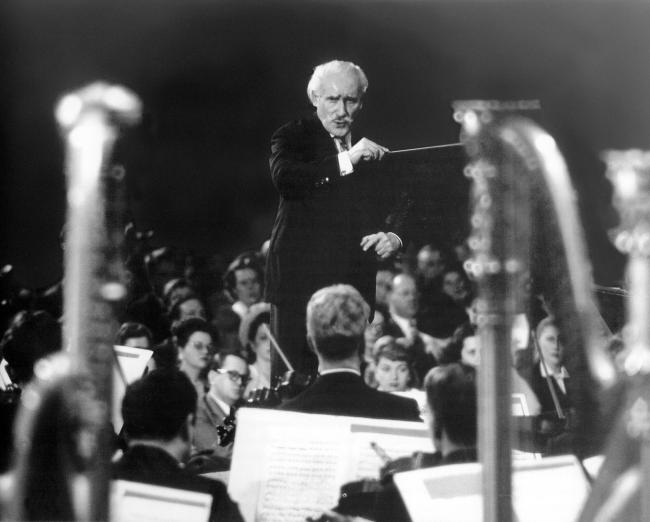
Historical Choice
NBC Symphony Orchestra / Toscanini
Guild GHCD2271/2
Toscanini leaves no pebble unturned: this energetic octogenarian puts the musicians through their paces in pursuit of the ideal as he hears it, meaning precision, transparent textures, drama and a sense of where the elements are leading us.
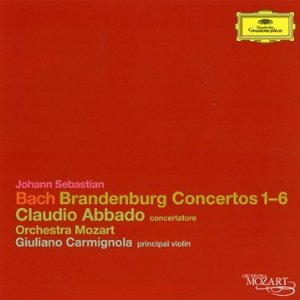
DVD Choice
Lucerne Festival Orchestra / Abbado
EuroArts 426 4438
Watching performers on screen holds little magic for me (what I hear is what matters most), but Abbado is excepted. His clear beat, the intensity of his facial expressions and the visual logic of his gestures remind us of the conductor’s vital role.
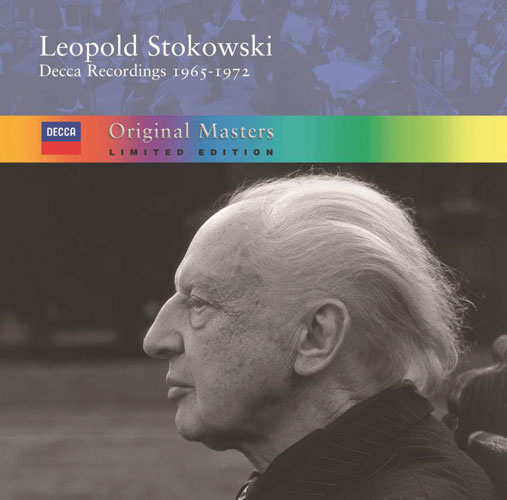
Wild Card
LSO / Stokowski
Decca 475 1452CD5
Imagine a Disney La mer (high-flying albatrosses, leaping dolphins, cold-eyed sharks on the prowl and all weathers), and that’s what this La mer amounts to: a film soundtrack rather than a three-tier symphony, thrilling and alarmingly immoderate.

Top Choice
Hallé Orchestra / Elder
Hallé CDHLL7513
From sea spray to thunder, from sunshine to threatening storm clouds, here’s a virtual- reality ocean caught in all her varied moods and colours – vivid, immediate, consistently atmospheric. The score is meticulously observed, but with no compromises.
Selected discography
Recording Date / Artists / Record company (review date)
1932 Paris Cons Orch / Coppola Dutton CDBP9806 (8/98)
1948 Orch Stabile Accademia di S Cecilia, Rome / de Sabata Testament SBT1108 (4/98)
1953 NBC SO / Toscanini Guild GHCD2271/2 (5/54)
1954 Philh Orch / Cantelli Warner 679043-2 (3/55)
1956 Boston SO / Munch Sony 88697 48681-2 (12/57)
1957 Suisse Romande Orch / Ansermet Decca Eloquence ELQ482 4975
1960 Chicago SO / Reiner RCA M D various cat nos (10/61)
1970 LSO / Stokowski Decca 475 1452CD5 (9/71)
1977 BPO / Karajan Warner 9029 57209-0
1978 Orch de Paris / Barenboim DG 478 3618GM (12/78)
1989 Montreal SO / Dutoit Decca 460 217-2DF2 (2/91)
1990 Suisse Romande Orch / A Jordan Erato 9029 59535-3 (11/91)
1991 Cleveland Orch / Boulez DG 439 896-2GH (3/95)
2003 Lucerne Fest Orch / Abbado EuroArts 426 4438; DG 477 5082GH2 (12/04)
2004 BPO / Rattle EMI/Warner 558045-2 (10/05)
2006 Hallé Orch / Elder Hallé CDHLL7513 (5/07)
2007 Lyon Nat Orch / Märkl Naxos 8 570759; 8 509002
2011-12 RSNO / Denève Chandos CHSA5102 (8/12)
2012 Siècles / Roth Actes Sud ASM10 (9/13)
2017 French Nat Orch / Krivine Erato 9029 56870-4 (6/18)
2017 Deutsches SO Berlin / Ticciati Linn CKD550 (A/17)
2018 Philh Orch / Heras-Casado Harmonia Mundi HMM90 2310 (7/18)
This article originally appeared in the September 2018 issue of Gramophone. To find out more about subscribing to Gramophone, please visit: gramophone.co.uk/subscribe





